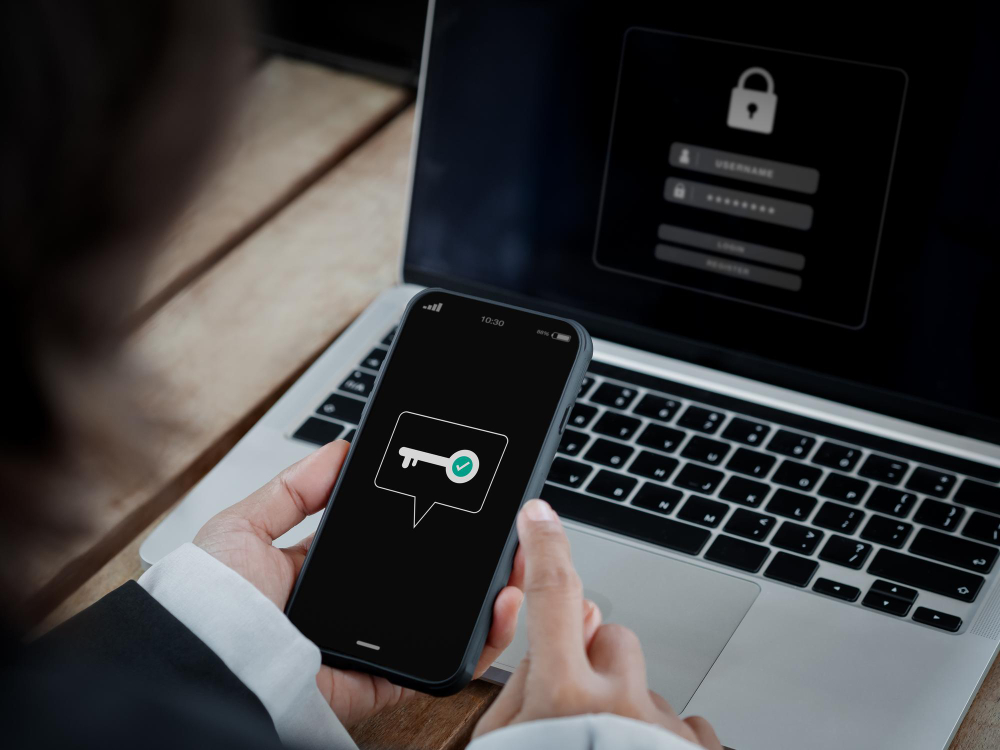So, what is phishing? Phishing is a type of cybercrime that targets people through various media. It’s a practice that can deceive someone into revealing their sensitive information.
This cybercrime could happen to any internet user, including you. There’s a sense of urgency for it. This is why learning about phishing will help you avoid falling victim to it, allowing you to feel more relaxed while surfing the internet.
If you want to learn more about phishing, keep reading this article.
What Is Phishing?

Phishing is a scam where attackers act as someone trustworthy or familiar, often disguising themselves as reputable entities like banks, government agencies, or even colleagues. It can be done through diverse communication channels, including email, phone calls, text messages, and more.
People who commit phishing use sophisticated strategies to trick individuals into revealing personal information. This can range from usernames and passwords to critical financial details like credit card account numbers.
The aim is to get the recipient’s sensitive data so they can use it to engage in other criminal actions, such as identity theft, financial fraud, unauthorized access to personal accounts, and spreading malicious software that can compromise the security of entire systems.
How Does Phishing Work?

As mentioned earlier, phishing can be done through various mediums. Besides two-way communication media, social media platforms also serve as a means for individuals to carry out this criminal activity.
To compile the victim data, phishers (someone who commits phishing) typically gather data from the victims’ social media, such as LinkedIn, Facebook, and Twitter. The data they seek may encompass a variety of details, such as personal information, work history, interests, and activities.
This information forms the basis for making tricky phishing emails. It helps the attacker craft messages that look real and are tailored to the specific person they are trying to deceive. After gathering various details, a phisher sends an email to the target, often designed to mimic legitimate communication from a trusted source.
The attack occurs when the victims open an attachment or click on a hyperlink, directing them to a malicious website. In either case, the attacker aims to install malware on the user’s device or reroute them to a deceitful website crafted to obtain personal and financial information, including passwords, account IDs, or credit card details.
These attacks highlight the importance of robust information security measures to protect individuals and organizations from falling victim to phishing scams.
Types of Phishing

As time passes, phishing methods continue to evolve. It no longer relies solely on sending emails or making phone calls; instead, it uses various strategies to deceive recipients.
Here are the types of phishing you should be aware of to protect yourself.
Whaling Attacks
Whaling attacks involve a specialized form of phishing that targets high-profile individuals within an organization, typically those in top executive positions. The goal is to get access or authority to the organization’s sensitive information.
Typically, attackers target individuals with the authority to make payments. They impersonate executives, issuing commands to transfer much money to a vendor or someone with whom the target is currently engaged.
Clone Phishing Attacks
Clone phishing is when scammers duplicate real emails sent before with a link or attachment. In these attacks, the cybercriminals make a copy, or clone, of the real email and change the original URLs or files to be harmful.
The goal is to trick people into clicking on the harmful link or opening the dangerous attachment. Attackers often use this trick if they’ve taken control of someone else’s computer. In these cases, they use their control over one computer in a company to send messages that look like they’re from a trusted sender that the victims know.
Calendar Phishing
This type of phishing involves the usage of calendar invitations. The attacker tries to deceive the victims by sending seemingly legitimate invitations, often designed to appear as everyday events or meetings.
If recipients engage with the invitation, it can potentially expose them to harmful links, whether in the form of malicious attachments or redirecting them to dangerous websites. This is where the criminal action starts and may unleash various threats to your data.
Spear Phishing Attacks
Spear Phishing employs a method similar to a whaling attack; however, it targets not only executives but also employees within the company. This specific phishing technique involves sending deceptive emails to co-workers or executives within the victim’s company.
In the emails, the phishers pose as the victims in an attempt to carry out their scams. By taking advantage of the trust within the organization, the attackers try to find weaknesses and get sensitive information.
Pharming
Pharming is a cyber attack that redirects website traffic to fraudulent websites without the user’s knowledge or consent. The attacker uses cache poisoning in this type of attack to manipulate the domain name system (DNS) and misdirect users to malicious websites.
By being redirected to fake websites, users may log in to these sites using their personal credentials. This acts as a significant risk as cybercriminals can then harvest sensitive information.
Evil Twin Attacks
An Evil Twin Attack is a form of phishing that takes advantage of how Wi-Fi networks work. In this scheme, attackers create a fake access point that looks like a trustworthy network. When the victim connects their gadget to the evil twin network, phishers gain unauthorized access to all the information transmitted between the victim’s device and the network.
SMS phishing
SMS phishing, or smishing, involves fraudulent attempts to deceive individuals through text messages on their mobile phones. In this mobile device-oriented attack, phishers use deceptive tactics to trick recipients into clicking on malicious links and asking them to provide personal data.
Voice Phishing
Voice phishing, also known as vishing, involves the usage of voice-based platforms like voice over IP or traditional phone services. This scam uses speech synthesis software to leave voicemails, claiming there’s suspicious activity in the victim’s bank or credit account.
It’s important to highlight that nowadays, scammers are using artificial intelligence (AI) to make their schemes more sophisticated. As a result, verifying the legitimacy of such communications has become more challenging.
Page Hijack Attack
Page hijack attack happens when an attacker gains unauthorized control over a user’s active web session or browser tab. The attacker takes advantage of vulnerabilities in the web application or browser to enter the user’s session, allowing them to manipulate or redirect the user to malicious duplicate websites. Typically, they inject malware into the website to carry out their criminal activities.
Phishing Techniques

After checking out the different types of phishing cybercriminals pull off, take a look below to find out how they usually trick their victims.
Malicious Attachments
Scamming a person using a file attachment is not a new phenomenon. Cybercriminals have been employing this tactic for some time, sending seemingly harmless files like documents or images to trick recipients. Opening such attachments may lead to the activation of harmful malware, potentially causing data breaches or unauthorized access.
Fraudulent Data Entry Forms
This technique involves deceptive forms that encourage users to enter confidential details, like usernames, passwords, credit card information, and phone numbers. When users provide this information, cybercriminals can exploit it for various illicit purposes, including identity theft.
For instance, a scammer creates a landing page that imitates the official government website. Upon clicking a link in a phishing email, users are redirected to this fake page, designed to resemble the tax collection agency. This could be an opportunity for the phisher to steal money from users.
Malicious Web Links
This phishing technique uses links to make a user click the link to the scammer’s website. These links are designed to trick users into believing they are accessing a trustworthy site, often resembling familiar platforms or official websites.
How to Prevent Phishing

Sure, it’s essential to know about the different types of phishing and how those sneaky criminals go about it. But the most crucial part? Learning how to prevent it. Read below!
Install Firewalls
Firewalls are tools that monitor and manage the flow of data entering and leaving a network, following established security rules. By installing this tool, the inbound and outbound traffic, including malware, can be controlled.
Malware, often camouflaged as phishing attempts, poses a risk by silently eavesdropping or engaging in covert activities within a computer system.
Change Passwords Regularly
To enhance security, users should update their passwords every 30-45 days. This practice limits the window of opportunity for potential attackers, preventing prolonged access to compromised accounts. Frequent password updates play a proactive role in securing user accounts and reducing security vulnerabilities, enhancing the authentication process.
Avoid Clicking Links
It’s recommended to avoid clicking on links without a credible source. Doing so could expose you to potential risks and threats. Always exercise caution and verify the legitimacy of the URL before interacting with them to ensure a safer online experience.
Keep Software and Firmware Up-To-Date
It’s not enough to install firewalls on your hardware. Keeping them updated and working correctly ensures their effectiveness in safeguarding your network. Plus, phishing types are continually increasing. Keeping your software and firewalls updated assists your tool in recognizing the latest methods and threats associated with phishing.
Use Anti-Phishing Email Security
Using strong email security, like anti-phishing tools with the help of artificial intelligence (AI), is vital for keeping cyber threats away. These advanced tools not only filter out annoying spam but also use AI to detect and block suspicious emails smartly.
If you spot a suspicious email, report phishing using these security features for an added layer of defense. AI in anti-phishing technologies makes them even better at automatically stopping potential threats before they reach your inbox.
Frequently Asked Questions
How to Spot a Phishing Email?
To identify phishing emails, check the sender’s email address for discrepancies, examine the content for errors or urgency, carefully check hyperlinks before clicking, confirm personalization in greetings, verify email signatures, and exercise caution with attachments.
If you get an email that seems too good to be true, conduct thorough verification. Watch out for misspellings and, when in doubt, reach out to the sender through trusted channels to confirm the email’s legitimacy.
How do cybercriminals use phishing as a means of attack?
Phishing is a tactic commonly used by cybercriminals who may be using email spoofing to imitate trusted entities, crafting messages that induce urgency or fear. They also create fake websites and distribute malicious links or attachments that can lead to malware installation or compromise data security, either via email or text messages. Social engineering is another aspect of their strategy, exploiting personal information gathered from social media platforms.
Are there specific signs or indicators that someone is being targeted by a phishing attempt?
Yes, there are specific signs that someone is being targeted by a phishing attempt. To recognize phishing emails or messages, identify certain signals, like receiving unexpected emails or messages pressuring immediate responses, such as password updates or account verification.
Conclusion
As technology advances, phishing attacks continue adapting and pose a substantial threat to cybersecurity. After learning what is phishing, implementing robust security measures and providing comprehensive training to mitigate the risks associated with various cyber attacks on your company is a must.
For advanced cybersecurity solutions, get in touch with Fluxgate to enhance your protection against evolving threats.
